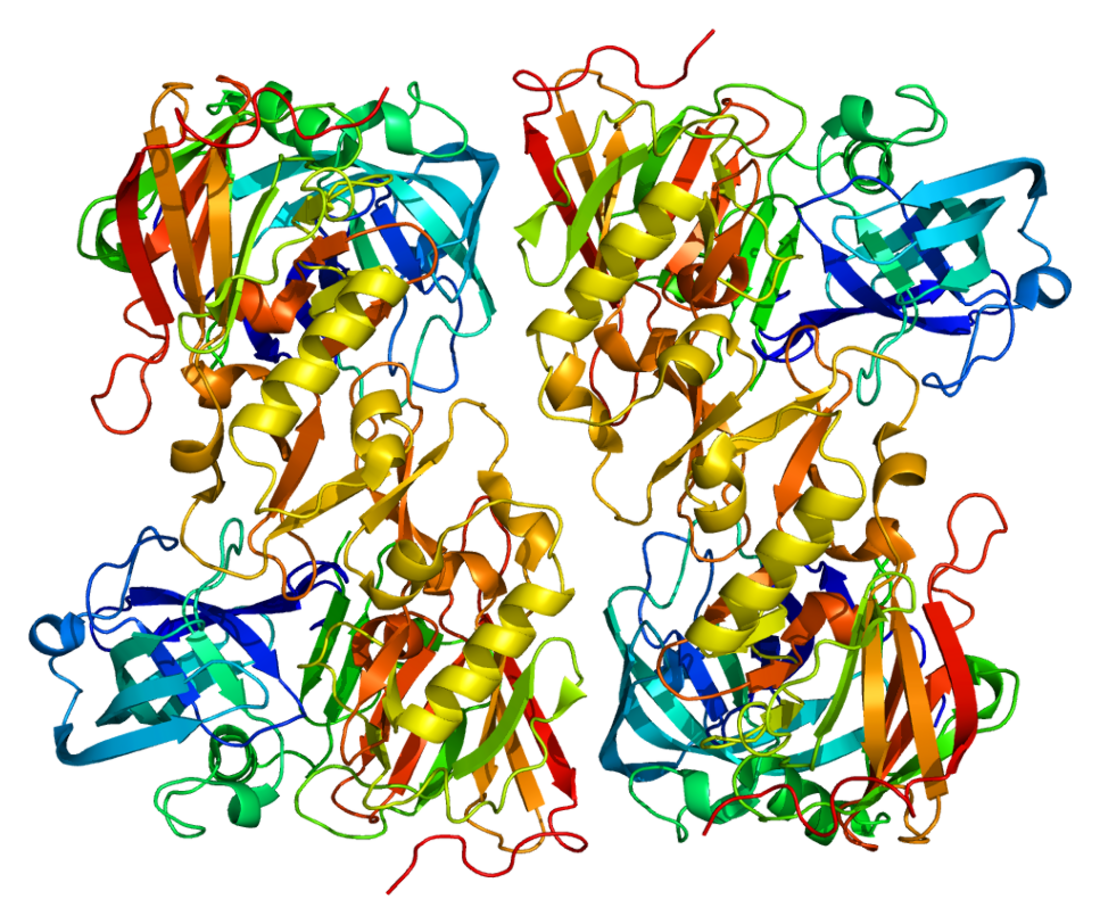Top Qs
Timeline
Chat
Perspective
Beta-secretase 2
Enzyme found in humans From Wikipedia, the free encyclopedia
Remove ads
Beta-secretase 2 (EC 3.4.23.45, also known as Memapsin-1) is an enzyme[5][6][7][8] that cleaves Glu-Val-Asn-Leu-|-Asp-Ala-Glu-Phe in the Swedish variant of Alzheimer's amyloid precursor protein. BACE2 is a close homolog of BACE1.
Remove ads
Gene
This gene is located in the "Down critical region" of chromosome 21, which has been implicated in the pathogenesis of Down syndrome. Three transcript variants encoding different isoforms have been described for this gene.[8]
Function
The protein encoded by this gene is a member of the peptidase A1 family, and functions as a type I integral membrane glycoprotein and aspartic protease. It is involved in the proteolytic cleavage of amyloid precursor protein (APP), a key step in the production of amyloid beta peptide. Cerebral deposition of amyloid beta peptide is an early and critical feature of Alzheimer's disease and a common complication in Down syndrome.
BACE2 has also been identified as the primary protease responsible for the release of the amyloidogenic ectodomain of Pmel17 in melanocytes, a process essential for the formation of the melanosome amyloid matrix.[9]
Remove ads
Clinical significance
BACE2 has been implicated in the maintenance of pancreatic β cells and regulation of glucose homeostasis. In mouse models, higher BACE2 activity has been associated with improved pancreatic function, suggesting potential therapeutic relevance for Type 2 Diabetes research.[10] In a separate context, a homozygous 25-base pair deletion in the BACE2 gene has been linked to the unique brown-and-white coat coloration in some giant pandas, as opposed to the typical black-and-white phenotype observed in the wild type.[11]
Interactions
BACE2 has been shown to interact with GGA1[12] and GGA2.[12]
References
Further reading
External links
Wikiwand - on
Seamless Wikipedia browsing. On steroids.
Remove ads






